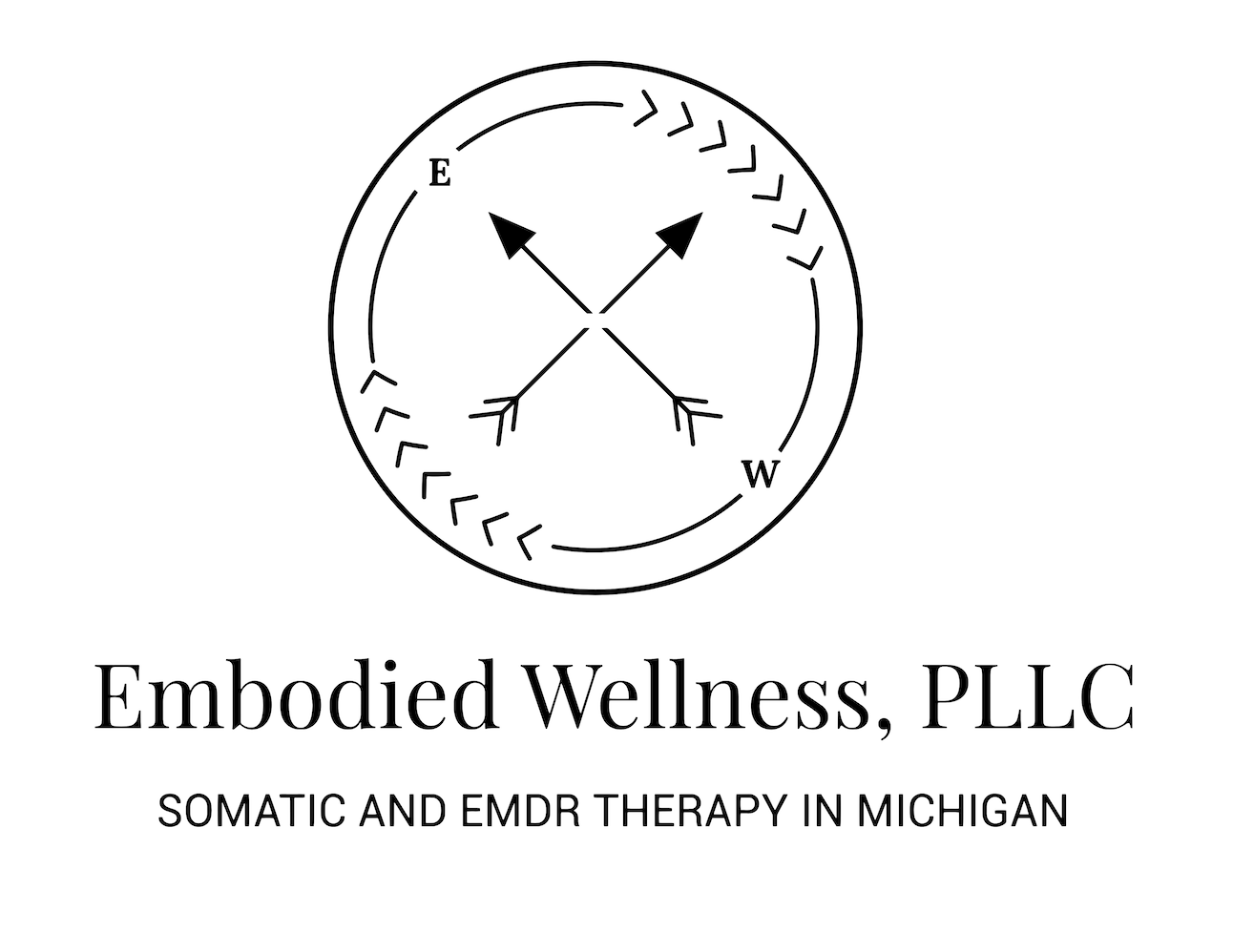EMDR: A Comprehensive Guide from an EMDR Therapist
What is EMDR?
Eye Movement Desensitization and Reprocessing (EMDR) is a unique and effective therapy developed by Dr. Francine Shapiro. It is designed to help you heal from trauma and distressing memories. EMDR therapy is usually recommended for those who have experienced traumatic events or suffer from anxiety caused by troubling memories. EMDR is a guided approach that involves tracking visual or tactile stimuli, such as lights or tapping while revisiting these distressing memories. This process helps the brain reprocess the memories. It allows them to become less overwhelming and reduces the power they hold by rewiring how these memories are stored and experienced. EMDR offers you a chance to heal from your past, alleviate anxiety, and pave the way for a more positive and balanced life!
How Do I Prepare Myself For EMDR Therapy?
There are a few important steps to prepare yourself for EMDR. All of these will be done with your EMDR therapist! The first is to create a trusting relationship with your therapist. This can take time and it’s important to remember that not every therapist will be the right fit for you. Next, it’s important to identify your goals for therapy. You don’t have to do this alone though! With your EMDR therapist, discuss your goals and concerns so the EMDR process can be tailored to meet your needs. Lastly, it can be helpful to maintain an open mind and be patient with the process. During EMDR, you will revisit challenging memories with the goal of reducing the negative impact on your mental health.
What Are The 8 Phases Of EMDR?
There is a common misconception that EMDR only involves the eye movement or tapping portion. In actuality, EMDR is 8 phases and the eye movements or tappings are just part of the process! It is important to work with a trained EMDR therapist and not rush through the 8 phases. Healing won’t happen faster if you skip the stages.
EMDR Phase 1- History Taking and Treatment Planning:
In this phase, you and your EMDR therapist will talk about why you are seeking therapy. Your therapist will seek to understand your history, what you have been through, and who you are. You begin to develop a secure and trusting relationship with your therapist. A treatment plan is developed that identifies what traumatic events you will work on throughout therapy.
EMDR Phase 2- Preparation:
You will learn about the EMDR process and what to expect during each session. Your therapist will answer any questions or concerns you have about therapy. You’ll discuss coping strategies and continue to establish a sense of safety and trust between you and the therapist. You can spend as much time as you need in phases one and two!
EMDR Phase 3- Assessment:
Together with your therapist, you will identify the event or memory that you want to process. This is called the target event. In addition to this event, you will identify any images, beliefs, feelings, and sensations that are connected to the event.
EMDR Phase 4- Desensitization:
This is the phase where the technique we most commonly think of EMDR is used. While recalling a target memory, you either follow your therapist's finger movements, tapping, or sound cues. During this process, your therapist will measure how distressed you are. The goal is to reduce your distress to zero, which means that the trauma memories, emotional charge, and intensity are gone.
EMDR Phase 5- Installation:
Only once the desensitization process is complete, can the installation phase begin. Positive thoughts are introduced to replace the negative ones associated with the target memory. The goal is to improve your self-esteem and resilience.
EMDR Phase 6- Body Scan:
While thinking about the target memory and the positive belief you developed in phase 5, you engage in a body scan. The goal of this stage is to process any lingering tension or distress in the body!
EMDR Phase 7- Closure:
One of the best parts of EMDR is that every session of reprocessing ends with closure. Closure means that the therapist helps you return to a calm and relaxed state. Your therapist doesn't want you to leave the session feeling upset.
EMDR Phase 8- Reevaluation:
When a new session starts, your EMDR therapist will check-in. They check to see how the memory you processed in the previous sessions is affecting you and if you are experiencing any distress. You and your therapist will then decide if you need to continue processing the memory or move to a new one!
What Happens During An EMDR Therapy Session?
During an EMDR session, you and your therapist work together to process traumatic experiences. Once you’ve completed the history-taking and preparation phase, typically, a session will begin with a brief check-in to see how you're feeling and if there have been any changes since the last session. Then, you identify a specific target memory while using a form of bilateral stimulation. Examples of bilateral stimulation include tracking your therapist's hand movements and following auditory cues. You will practice these before you start the actual processing.
As you engage in these movements, your therapist helps to guide you through the memory. You also address the associated thoughts, emotions, and physical sensations that are distressing. The goal of EMDR is to reduce the emotional charge attached to the memory. After EMDR, people report that they don’t forget about their experience but see it as less distressing.
Your therapist helps you stay grounded throughout the session. They also provide techniques to manage any discomfort that might arise. Before you leave, you're guided through a body scan and relaxation exercises to ensure you feel stable and at ease. The process of EMDR is collaborative so you can share your feelings and experiences the entire time. You can stop anytime and your therapist will go at your pace.
.
How Many Sessions Are Typical For EMDR?
The average number of sessions for EMDR ranges from 6-12 sessions. There are many reasons you might need more or less than this amount. The number of sessions for EMDR varies depending on the individual and the goals for treatment. EMDR is typically considered a shorter-term therapy compared to some other treatment approaches but a lot of times it is combined with other therapies. If you have many distressing memories or traumatic events, EMDR might take longer than 12 sessions. As a trauma therapist, my advice would be to focus less on how many sessions EMDR takes and focus more on moving at a pace where you feel comfortable and safe.
Common Reasons To Start EMDR Therapy
EMDR is not only for trauma. There are various reasons that you might consider starting EMDR. Ultimately, there is no wrong reason to start EMDR!
Traumatic Experiences: EMDR is most commonly known for treating trauma and PTSD and the associated distressing memories. Examples of traumatic experiences include but are not limited to accidents, violence, or natural disasters.
Anxiety Disorders: EMDR can be effective in treating various anxiety disorders, including phobias, panic disorders, social anxiety disorder, and generalized anxiety disorder. EMDR reduces the intensity of anxiety-inducing memories or situations.
Depression: EMDR can be used to address depression symptoms such as negative self-beliefs that stem from past experiences. EMDR can improve your self-esteem and your self-image.
Obsessive-compulsive disorders: EMDR can treat disorders such as obsessive-compulsive disorder (OCD) and hoarding disorder. Through reprocessing the distressing thoughts and emotions linked to these obsessions, anxiety is reduced and symptoms improve!
Grief and Loss: EMDR can process grief and loss by helping you to navigate the emotions tied to the death of a loved one or other significant life changes.
Who Is EMDR Not Suitable For?
Just like other therapies, EMDR may not be right for everyone. If EMDR is not right for you, it does not mean there is something wrong with you or you cannot recover from trauma. There are many other trauma treatments such as somatic therapy, Somatic Experiencing, DBT, and IFS that might be a better fit.
There are a few common reasons you might not be a good candidate for EMDR. The first is if you are currently in a mental health crisis such as experiencing suicidal ideation or plan. If you have thoughts of hurting yourself (or someone else), immediately call 911 or go to your local emergency room. Another reason EMDR might not be a good fit is if you are struggling with substance abuse. If you experience dissociative symptoms, which are common with a history of trauma, you may need to resolve these symptoms before beginning EMDR.
To determine if EMDR is a good fit for you, it’s recommended that you go to a certified EMDR therapist for an evaluation.
Can I Do EMDR On myself?
EMDR should only be administered by a licensed EMDR therapist. The goal of EMDR is to reduce the impact of distressing memories so it’s important to have the support, structure, and guidance of a trained therapist. EMDR is not a therapy you should learn or try from a YouTube video, book, or TikTok. Once you are in EMDR therapy, your clinician might give you techniques that you can do at home.
Begin EMDR Therapy in Ann Arbor, Detroit, and throughout Michigan!
Struggling with the effects of trauma or distressing memories? It is time to take action and consider EMDR therapy in Ann Arbor, MI. Here at Embodied Wellness, PLCC, our trained EMDR therapists can help you on your road to healing. Take the courageous step toward recovery and growth. To begin EMDR therapy follow the steps below:
Contact us for a free 15-minute consultation.
Speak with a compassionate EMDR therapist.
Free yourself from your trauma.
Other Therapy Services Offered at Embodied Wellness in Ann Arbor, Detroit, and throughout Michigan
Our dedicated and compassionate EMDR therapists offer more than just EMDR Therapy. Our other services include Empath therapy and Online Therapy. Our specialties include OCD treatment and ERP therapy, Trauma therapy and PTSD treatment, DBT, depression treatment, Somatic Therapy, and Internal Family Systems. All these online therapy services are available for teenagers and adolescents as well as adults. Get in touch with our Detroit-based practice today and start on the journey to a brighter future!





